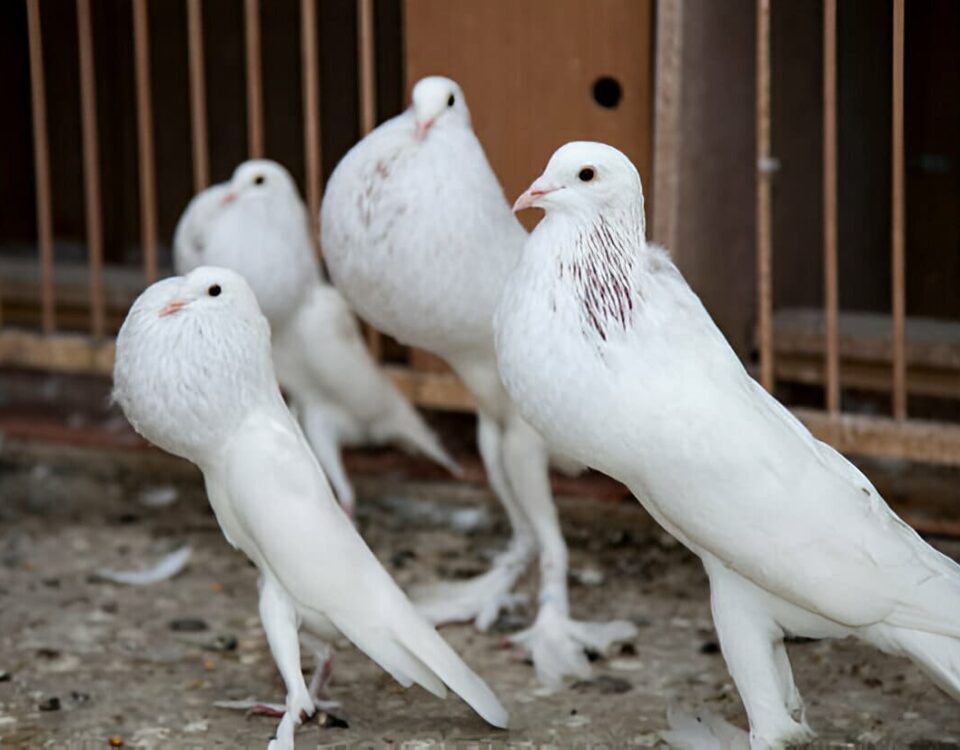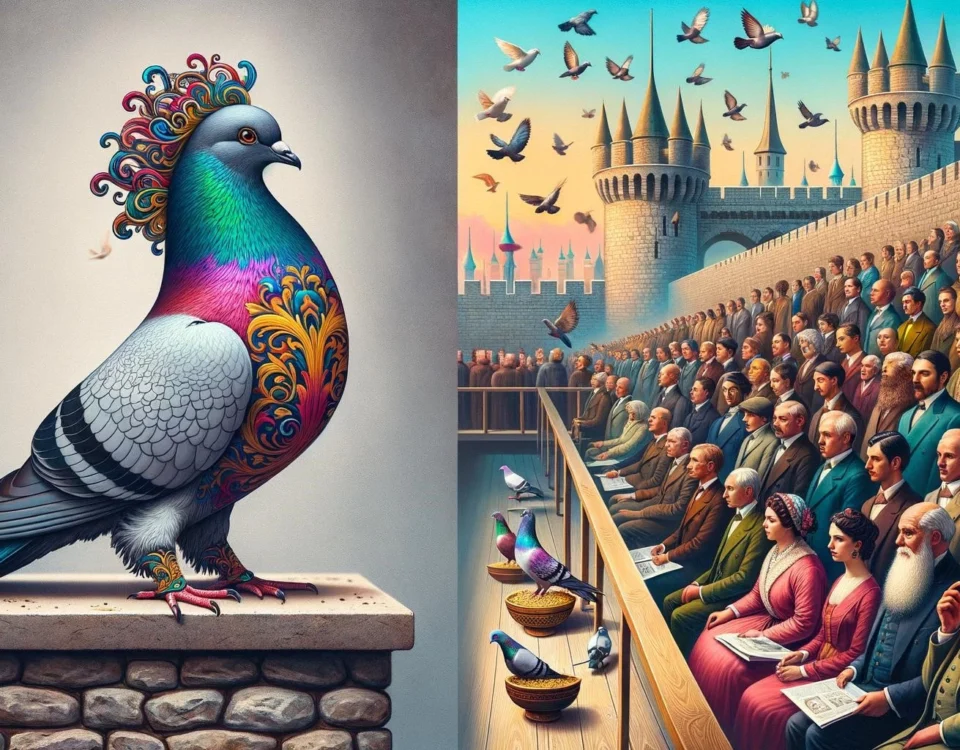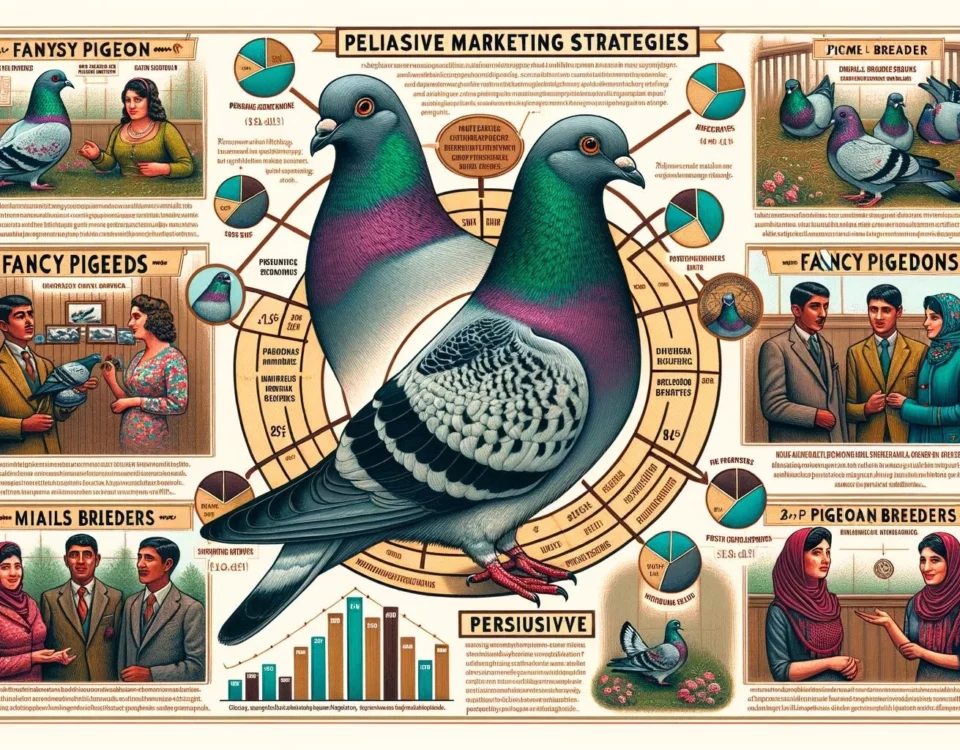Fancy pigeons, also known as domestic pigeons, are a breed of pigeons that have been bred by pigeon fanciers for various traits such as size, shape, color, and behavior. They are often exhibited at pigeon shows and other livestock exhibits. However, despite their beauty and unique characteristics, fancy pigeons are often overlooked and even despised, especially in urban areas. The rapid process of urbanization has led to significant changes in the local ecological communities, including the pigeon population, which has adapted to thrive in urban environments. In this article, we will explore the relationship between fancy pigeons and urbanization, examining their presence in urban areas, their impact on local ecosystems, and the challenges and benefits they face in an urban setting.
Key Takeaways
- Fancy pigeons are domestic pigeons that have been bred by pigeon fanciers for various traits.
- The urbanization process has led to significant changes in the ecological communities, including the pigeon population.
- Fancy pigeons are often found in urban areas and can compete with native bird species for resources.
- They face both challenges and benefits in an urban environment, such as access to food and nesting sites.
- The presence of fancy pigeons in urban areas also raises questions about their impact on local ecosystems.
Fancy Pigeons in Urban Areas
Fancy pigeons can be found in both urban and rural environments, but their presence is more prominent in urban areas. In cities, they are often seen clambering for scraps on the streets or roosting on buildings. Unfortunately, their ubiquity and colloquial characterization as ″flying rats″ have given them a lackluster reputation. Despite this, some photographers and artists have sought to change the perception of pigeons by highlighting their beauty and uniqueness through portraits and artwork. These efforts aim to challenge the negative stereotypes associated with pigeons and showcase their aesthetic appeal.
In urban areas, fancy pigeons coexist with feral pigeons, which are the common blue variety of pigeons that have adapted to urban environments. Feral pigeons, also known as rock pigeons, are descendants of domesticated pigeons that have escaped or been released into the wild. They have successfully adapted to urban landscapes and can be found roosting on buildings and foraging for food in parks and other urban spaces. Feral pigeons and fancy pigeons often share the same habitats and compete for resources.
Impact on Local Ecosystems
The presence of fancy pigeons in urban areas can have both positive and negative impacts on local ecosystems. On one hand, they contribute to the biodiversity of urban environments and serve as a connection between humans and nature. Pigeons have been a part of human culture for centuries and have symbolized peace, love, and purity. They have also been used for various purposes, such as carrying messages during wars.
On the other hand, the presence of fancy pigeons can also disrupt the balance of native bird species in urban ecosystems. They may compete with native bird species for nesting sites and food, potentially leading to a decline in the populations of these native species. Additionally, their ability to adapt to urban environments and their fast reproductive rate can result in an overabundance of pigeons, creating further challenges for local ecosystems.
Furthermore, the presence of fancy pigeons in urban areas raises questions about the genetic patterns and spatial distribution of pigeon populations. Pigeon hobbyists, who collect, breed, trade, and race pigeons, may have different preferences and practices in different regions. This can impact the genetic diversity of pigeon populations in urban areas and potentially create spatial genetic patterns.
Challenges and Benefits in an Urban Environment
Fancy pigeons face both challenges and benefits in an urban environment. On one hand, urban areas provide a steady source of food for pigeons, with scraps and discarded food readily available. The urban landscape also offers a multitude of nesting sites, including buildings, rooftops, and trees. These factors contribute to the adaptability of fancy pigeons and their ability to thrive in urban areas.
However, there are also challenges that fancy pigeons face in urban environments. The negative perception of pigeons and the desire to control their populations can result in efforts to discourage their presence in urban areas, such as the installation of bird spikes or the use of deterrents. Additionally, the urban landscape may not always provide ideal conditions for nesting and breeding, as certain pigeon breeds may have specific requirements for their habitats.
In conclusion, fancy pigeons and urbanization are intertwined as the process of urbanization has led to the adaptation and proliferation of fancy pigeons in urban areas. While fancy pigeons can add aesthetic value and serve as a connection between humans and nature, their presence can also impact the balance of local ecosystems. Understanding the relationship between fancy pigeons and urbanization is crucial in managing and preserving urban biodiversity.









